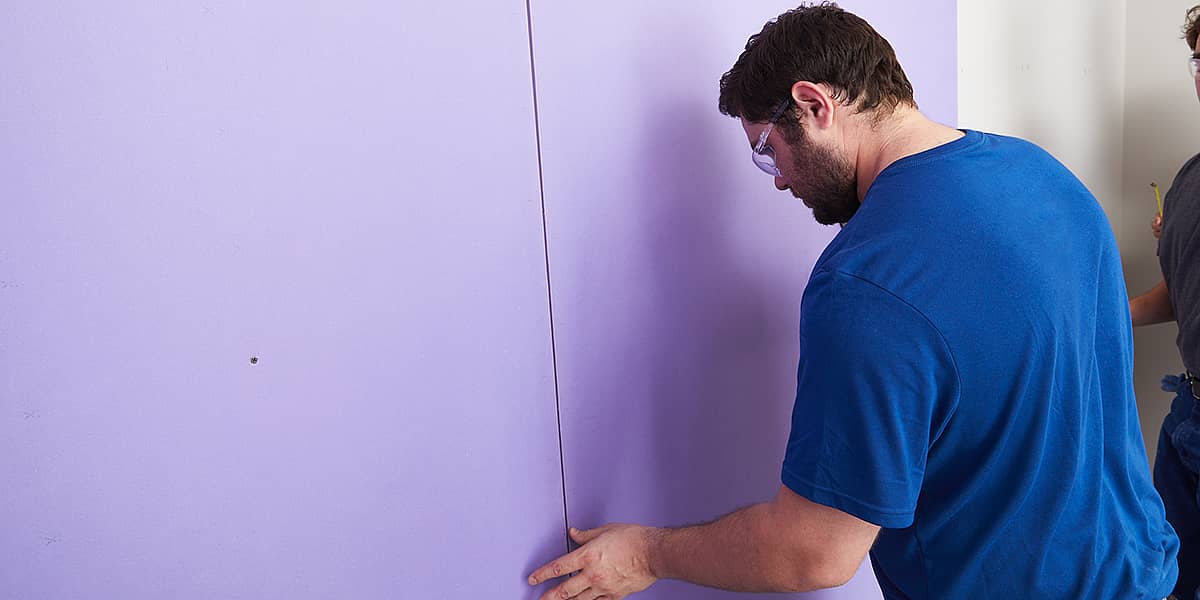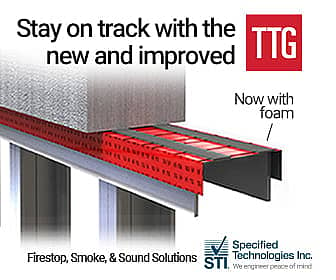Earlier this month I received some questions about control joints for interior partitions. I sent the caller a note on this topic from the Technical Services Information Bureau, then thought about some of the issues I have seen some issues with cracking in wall and ceiling systems over the years, and this month I want to cover interior gypsum applications. The joint requirements are different for exterior applications and for portland cement plaster.
In all construction, builders and designers need to account for movement—movement of the building, and movement of the finish materials and supports. All materials move slightly when loaded. Wood shrinks when it dries out and expands when it gets wet. All materials, especially metals, expand when they get hot. And cementitious materials shrink as the portland cement chemically reacts with water. To reduce visible cracking in finishes from movement issues, a variety of products and strategies can help relieve stresses in wall and ceiling finish materials.
But before we talk about joints and how they provide relief, it would be good to know how to prevent these stresses from happening in the first place. For interior systems, keeping spaces conditioned within a comfortable temperature and humidity range is helpful. During COVID-19, there were multiple instances where an interior project was finished but not occupied for months or even years. Although the lack of occupancy in itself is not problematic, shutting down the conditioning systems was. Walls that were intended to have decades of service life between 50 degrees and 80 degrees Fahrenheit and humidity between 40% and 60% were experiencing conditions well beyond these ranges—and as expected, cracking occurred.
So the first step to avoid cracking in interior spaces is to maintain the conditioning. Areas that will not be continually conditioned, such as a stadium with an operable roof or patio areas that are enclosed during part of the year and open during others, need to have different detailing to match anticipated extreme conditions of humidity and temperature.
ASTM C840, Standard Specification for Application and Finishing of Gypsum Board, and Gypsum Association document GA-216, “Application and Finishing of Gypsum Panel Products,” give similar requirements for joints in interior walls. The wording is slightly different in some areas but the intent is the same. Both documents contain details and tables for various wall and ceiling applications, and fastener and framing schedules for both wood and steel framing. C840 is the document most often listed in specification documents, and it is important to have these on hand during estimating and construction. Technical Bulletin 30.200 from the TSIB includes many of the provisions from both documents that are specific to control joint installation and spacing. It is a free download from tsib.org.
An important point: ASTM C840 section 20.2 states, “Control joints shall be installed where indicated on the plans.” It is important for architects, interior designers and detailers to know that if they do not show the joints, the contractor cannot be expected to put them in. GA-216 states the same thing. The TSIB document goes as far as saying, “If the control joints are referenced in the specifications but are not indicated on the construction drawings, the anticipated quantity for the contractor is zero.”
So where should architects and designers show the joints? Both ASTM and GA give these criteria:
- A control joint shall be installed where a partition, wall or ceiling traverses a construction joint (expansion, seismic or building control element) in the base building structure.
- Control joints shall be installed where a wall or partition runs in an uninterrupted straight plane exceeding 30 linear feet.
- Full-height door openings shall be considered equivalent to a control joint.
- Control joints shall be installed where specified by the architect or designer as a design accent or architectural feature.
- Where a control joint occurs in an acoustical or fire-rated system, blocking shall be provided behind the control joint. (Both ASTM C840 and GA-216 include details for fire blocking behind control joints in either steel or wood assemblies.)
For interior ceilings:
- Control joints in interior ceilings with perimeter relief shall be installed so that linear dimensions between control joints do not exceed 50 feet and total area between control joints does not exceed 2,500 square feet.
- Control joints in interior ceilings without perimeter relief shall be installed so that linear dimensions between control joints do not exceed 30 feet and total area between control joints does not exceed 900 square feet.
- A control joint or intermediate blocking shall be installed where ceiling framing members change direction.
Criteria are different for exterior walls and soffits; I will cover that in the future. On exteriors, the joints depend heavily on the type of cladding and where building movement must be accommodated, such as at slip trackss. As an estimator or installer, it is best to review the interior elevations and reflected ceiling plans to verify that joints in interior wall and ceiling systems meet ASTM and GA criteria. If they do not, it is best to bring this to the attention of the designer early and confirm the intent, rather than waiting until after cracks begin to develop.
Don Allen, PE, SE, LEED AP, is AWCI’s director of technical services. He can be reached at allen@awci.org.







